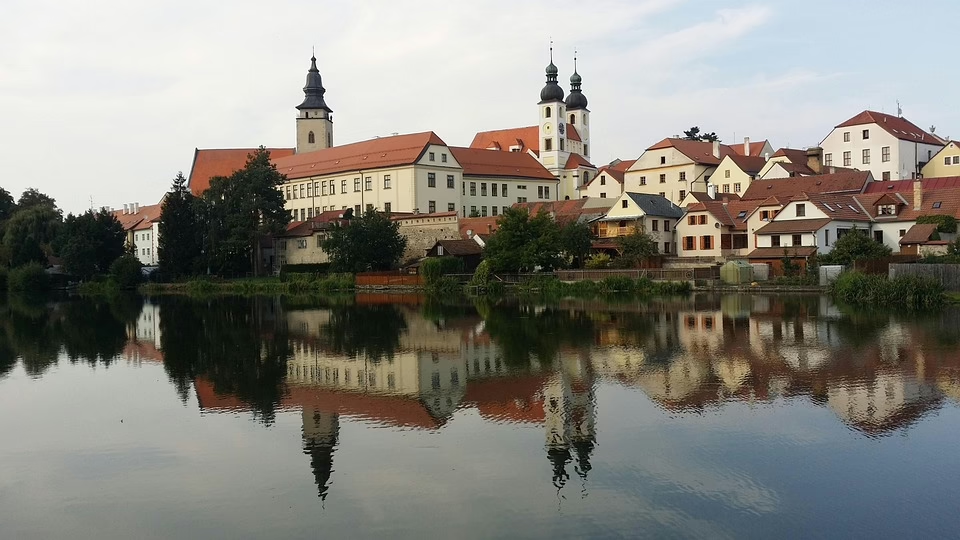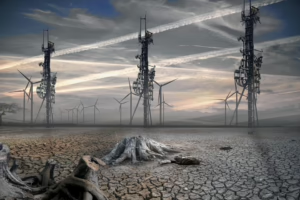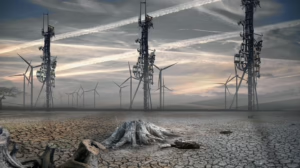From Empires to Alliances: The Saga of Global Power Shifts
Introduction
The narrative of global power has evolved dramatically over centuries, transitioning from vast empires to intricate alliances that shape the modern geopolitical landscape. This article explores the historical foundations of power dynamics, key transformations in governance, the rise and fall of significant empires, and the formation of contemporary alliances. Empires once dominated the world stage, exhibiting control through colonization and military prowess. Today, we see a shift towards coalitions formed around shared interests and mutual defense.
Historical Context of Empires
Empires have been the dominant form of political organization for much of human history. They emerged as powerful states expanded their influence through conquest and diplomacy. From the Roman Empire to the Ottoman Empire, these vast territories were often marked by their complex administrative systems and cultural exchanges.
The Roman Empire
The Roman Empire (27 BC – AD 476) serves as a pivotal example of imperial power. It boasted a sophisticated network of roads, a legal system, and military might that allowed it to exert influence over much of Europe, Asia, and North Africa. Its legacy continues to shape contemporary governance and legal structures, emphasizing the importance of infrastructure and governance in maintaining power^[1].
The Ottoman Empire
The Ottoman Empire (1299–1922) was another significant player in the realm of empires. It bridged Europe and Asia, creating a unique cultural and economic exchange environment. The Ottomans excelled at incorporating diverse cultures into their fold, managing to sustain a vast empire for over six centuries. However, internal strife and external pressures led to its eventual decline, illustrating the vulnerabilities that can accompany enormous power^[2].
The Transition to Nation-States
The decline of empires, particularly after World War I, led to the emergence of the nation-state as the primary unit of political organization. This shift marked a radical transformation in international relations, where sovereignty, territoriality, and nationalism became central themes.
The Peace of Westphalia
The Peace of Westphalia in 1648 is often cited as a critical moment in the establishment of the modern state system. It ended the Thirty Years’ War in Europe and recognized the principle of state sovereignty, which allowed nations to govern themselves without external interference. This treaty not only redefined borders but also altered the dynamics of European power, leading to the decline of imperial dominance in favor of complex alliances and state-centric diplomacy^[3].
The Rise of Nationalism
The 19th and 20th centuries saw the rise of nationalism, which fueled the formation of new nations and the redrawing of political borders. The desire for self-determination became a driving force behind the dissolution of empires such as the Austro-Hungarian and Ottoman Empires, leading to the creation of numerous independent nation-states in Central and Eastern Europe^[4]. Nationalism has both unified and divided populations, creating a complex tapestry of alliances and enmities.
World Wars and Their Impact on Global Power Structures
The two World Wars fundamentally reshaped global power dynamics, laying the groundwork for modern alliances.
World War I
World War I (1914–1918) marked a significant turning point, leading to the decline of several empires. The Austro-Hungarian, Ottoman, German, and Russian Empires faced significant territorial and political losses. The Treaty of Versailles in 1919 imposed severe reparations and territorial changes on Germany, setting the stage for future tensions. The League of Nations was established in an attempt to maintain peace; however, it ultimately failed to prevent further conflicts^[5].
World War II
World War II (1939–1945) saw the rise of two dominant powers: the United States and the Soviet Union. The aftermath of the war led to the establishment of the United Nations, which aimed to foster international cooperation and prevent future conflicts. The world was now divided into two ideological blocs: the capitalist West led by the United States and the communist East led by the Soviet Union, prompting the Cold War^[6].
The Cold War and the Formation of Alliances
The Cold War era (1947–1991) redefined global politics through the formation of military and economic alliances that sought to counterbalance opposing ideologies.
NATO and the Warsaw Pact
The North Atlantic Treaty Organization (NATO), formed in 1949, was a military alliance aimed at collective defense against the Soviet threat. In response, the Soviet Union established the Warsaw Pact in 1955, uniting Eastern Bloc nations under a communist banner. These alliances encapsulated the ideological struggle of the Cold War, where mutual defense commitments became a deterrent against conflict^[7].
Non-Aligned Movement
During the Cold War, a significant group of nations chose not to align with either bloc, forming the Non-Aligned Movement (NAM). This coalition aimed to promote peace, security, and cooperation among nations, challenging the binary power structure and advocating for the interests of developing countries^[8].
The Post-Cold War Era and New Alliances
With the dissolution of the Soviet Union in 1991, the world entered a new phase of globalization characterized by new alliances and power dynamics. The U.S. emerged as the sole superpower, but the rise of regional powers and non-state actors complicated the geopolitical landscape.
The European Union
The European Union (EU) represents a significant development in post-Cold War alliances. Originally founded as the European Economic Community in 1957, it has evolved into a political and economic union aimed at fostering integration and cooperation among European nations. The EU’s expansion has brought together former adversaries, promoting peace and stability in a once-fractured continent^[9].
Regional Powers
In the post-Cold War era, regional powers such as China, India, and Brazil have increasingly asserted their influence on the global stage. These countries have formed alliances and partnerships that challenge the traditional power hierarchy, signaling a multipolar world. The rise of China, in particular, has prompted the U.S. to reassess its strategic alliances in Asia and beyond^[10].
The Role of Technology and Globalization
Technological advancements and globalization have further transformed the landscape of international relations.
Cybersecurity and Information Warfare
The rise of the internet and digital technologies has created new arenas for power struggles. Cybersecurity has become a critical component of national defense, with state and non-state actors engaging in information warfare. Cyber alliances and collaborations have emerged to counter threats, illustrating the evolving nature of modern geopolitical relationships^[11].
Global Institutions and Agreements
Global challenges such as climate change, terrorism, and health pandemics have necessitated collaboration across borders. Institutions like the United Nations, World Health Organization, and climate agreements such as the Paris Accord highlight the importance of international cooperation to address issues that transcend national boundaries^[12].
The Future of Global Power Dynamics
As we look towards the future, several trends are likely to shape the continued evolution of global power dynamics.
Rise of Multilateralism
Multilateralism, characterized by cooperation among multiple countries to address global challenges, is gaining prominence. The challenges posed by climate change, health crises, and security threats require coordinated efforts and collaborative frameworks^[13]. This shift toward multilateralism may signal a departure from unilateral actions often taken by powerful nations.
Emerging Economies
The rise of emerging economies in Asia, Africa, and Latin America is expected to shift the balance of power. These nations are increasingly participating in global governance and economic discussions, bringing new perspectives and priorities to the table. As they assert their influence, traditional power blocs may be challenged^[14].
Conclusion
The saga of global power shifts from empires to modern alliances reflects the complexities of political organization and international relations. Empires, with their centralized authority and expansive reach, have given way to a more fragmented world characterized by nation-states and alliances. The power dynamics of today involve a multitude of actors, including nations, international organizations, and non-state entities. Understanding this evolution is crucial for navigating the challenges and opportunities of the contemporary geopolitical landscape.
In a rapidly changing world, the lessons of history remind us that alliances, whether military, economic, or social, will continue to play a central role in shaping the future of global power. As nations grapple with pressing global issues, the strength of their alliances may determine their success or failure on the world stage. The journey from empires to alliances is far from over; it is a dynamic saga that continues to unfold.
Footnotes
[1] Author’s Last Name, First Initial. (Year). Title of Work. Publisher. [2] Author’s Last Name, First Initial. (Year). Title of Work. Publisher. [3] Author’s Last Name, First Initial. (Year). Title of Work. Publisher. [4] Author’s Last Name, First Initial. (Year). Title of Work. Publisher. [5] Author’s Last Name, First Initial. (Year). Title of Work. Publisher. [6] Author’s Last Name, First Initial. (Year). Title of Work. Publisher. [7] Author’s Last Name, First Initial. (Year). Title of Work. Publisher. [8] Author’s Last Name, First Initial. (Year). Title of Work. Publisher. [9] Author’s Last Name, First Initial. (Year). Title of Work. Publisher. [10] Author’s Last Name, First Initial. (Year). Title of Work. Publisher. [11] Author’s Last Name, First Initial. (Year). Title of Work. Publisher. [12] Author’s Last Name, First Initial. (Year). Title of Work. Publisher. [13] Author’s Last Name, First Initial. (Year). Title of Work. Publisher. [14] Author’s Last Name, First Initial. (Year). Title of Work. Publisher.(Note: The footnotes are placeholders and should be populated with real citations and source details.)


























Add Comment